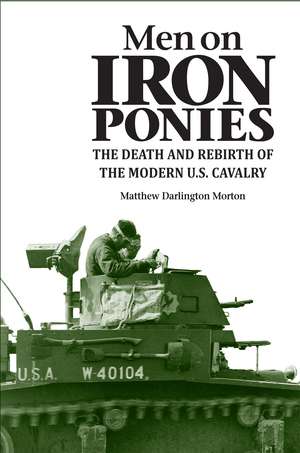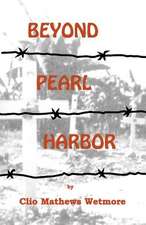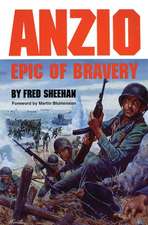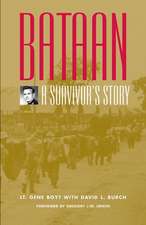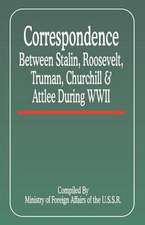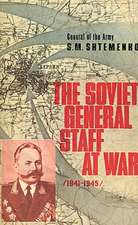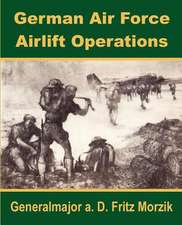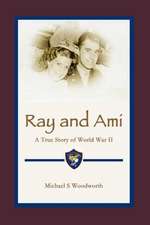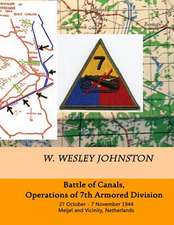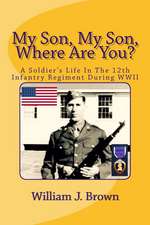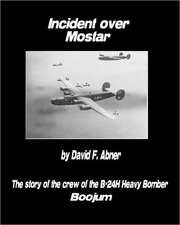Men on Iron Ponies: The Death and Rebirth of the Modern U.S. Cavalry
Autor Matthew Darlington Mortonen Limba Engleză Hardback – 3 mai 2009
At the end of World War I, the United States Army—despite its recent experience with trenches, machine guns, barbed wire, airplanes, and even tanks—maintained a horse-mounted cavalry from a bygone era. From the end of World War I until well into World War II, senior leaders remained convinced that traditional cavalry units were useful in reconnaissance, and horses retained a leading role. Months into World War II, the true believers in the utility of the horses had their hopes shattered as the last horse cavalry units either dismounted to fight as infantry or traded their oat-eating horses for gasoline-guzzling “iron ponies.” The horse belonged to the past, and the armored truck was the way of the future.
Morton has examined myriad official records, personal papers, doctrine, and professional discourse from an era of intense debate about the future of the U.S. Cavalry. He has captured the emotion of the conflict that ultimately tore the branch apart by examining the views of famous men such as George S. Patton, Jr., Lesley J. McNair, George C. Marshall, and Adna R. Chaf-fee, Jr. More importantly, Morton brings new light to lesser-known figures—John K. Herr, I. D. White, Lucian K. Truscott, Willis D. Crittenberger, Charles L. Scott, and William S. Biddle—who played equally important roles in shaping the future of the U.S. Cavalry and in determining what function it would play during World War II.
At the heart of the book are the myriad questions about how to equip, train, and organize for a possible future war, all the while having to retain some flexibility to deal with war as it actually happens. Morton goes beyond the explanation of what occurred between the world wars by showing how the debate about the nature of the next war impacted the organization and doctrine that the reformed U.S. Cavalry would employ on the battlefields of North Africa, Italy, the beaches of Normandy, and through the fighting in the Ardennes to the link-up with Soviet forces in the heart of Germany. Leaders then, as now, con-fronted tough questions. What would the nature of the next war be? What kind of doctrine would lend itself to future battle-fields? What kind of organization would best fulfill doctrinal objectives, once established, and what kind of equipment should that organization have? The same challenges face Army leaders today as they contemplate the nature of the next war.
Morton has examined myriad official records, personal papers, doctrine, and professional discourse from an era of intense debate about the future of the U.S. Cavalry. He has captured the emotion of the conflict that ultimately tore the branch apart by examining the views of famous men such as George S. Patton, Jr., Lesley J. McNair, George C. Marshall, and Adna R. Chaf-fee, Jr. More importantly, Morton brings new light to lesser-known figures—John K. Herr, I. D. White, Lucian K. Truscott, Willis D. Crittenberger, Charles L. Scott, and William S. Biddle—who played equally important roles in shaping the future of the U.S. Cavalry and in determining what function it would play during World War II.
At the heart of the book are the myriad questions about how to equip, train, and organize for a possible future war, all the while having to retain some flexibility to deal with war as it actually happens. Morton goes beyond the explanation of what occurred between the world wars by showing how the debate about the nature of the next war impacted the organization and doctrine that the reformed U.S. Cavalry would employ on the battlefields of North Africa, Italy, the beaches of Normandy, and through the fighting in the Ardennes to the link-up with Soviet forces in the heart of Germany. Leaders then, as now, con-fronted tough questions. What would the nature of the next war be? What kind of doctrine would lend itself to future battle-fields? What kind of organization would best fulfill doctrinal objectives, once established, and what kind of equipment should that organization have? The same challenges face Army leaders today as they contemplate the nature of the next war.
| Toate formatele și edițiile | Preț | Express |
|---|---|---|
| Paperback (1) | 134.81 lei 3-5 săpt. | |
| Northern Illinois University Press – 25 noi 2018 | 134.81 lei 3-5 săpt. | |
| Hardback (1) | 202.22 lei 3-5 săpt. | |
| Northern Illinois University Press – 3 mai 2009 | 202.22 lei 3-5 săpt. |
Preț: 202.22 lei
Nou
Puncte Express: 303
Preț estimativ în valută:
38.72€ • 40.32$ • 32.12£
38.72€ • 40.32$ • 32.12£
Carte disponibilă
Livrare economică 24 ianuarie-07 februarie
Preluare comenzi: 021 569.72.76
Specificații
ISBN-13: 9780875803975
ISBN-10: 0875803970
Pagini: 300
Dimensiuni: 152 x 229 x 25 mm
Greutate: 0.59 kg
Ediția:1
Editura: Northern Illinois University Press
Colecția Northern Illinois University Press
Locul publicării:United States
ISBN-10: 0875803970
Pagini: 300
Dimensiuni: 152 x 229 x 25 mm
Greutate: 0.59 kg
Ediția:1
Editura: Northern Illinois University Press
Colecția Northern Illinois University Press
Locul publicării:United States
Recenzii
"Men on Iron Ponies offers a comprehensive and readable analysis of American cavalry development from the 1930s through the end of World War II. It highlights the Army’s efforts to determine how best to incorporate new technology in the form of the vehicle into its mounted branch. The author traces the ensuing war of ideas surrounding doctrine, organization, and tactics through the war years. The result is a succinct narrative of the cavalry experience in this formative era coupled with a timeless and intelligent articulation of the complexities associated with fundamental technological change by a military organization."
—Robert S. Cameron, PhD, military historian and author of To Fight or Not to Fight?: Organizational and Doctrinal Trends in Mounted Maneuver Reconnaissance from the Interwar Years to Operation IRAQI FREEDOM
“A coherent, intelligent study of the cavalry branch’s flawed efforts to grapple with the problems of mechanization during the interwar period. It will make a major contribution to the literature on innovation during this period.”
—Dr. Williamson Murray, Ohio State University
“The definitive history of mechanized cavalry in WWII. This is a model work of its kind, one I would be proud to have written.”
—Dennis Showalter, Colorado College, author of Patton and Rommel: Men of War in the Twentieth Century
—Robert S. Cameron, PhD, military historian and author of To Fight or Not to Fight?: Organizational and Doctrinal Trends in Mounted Maneuver Reconnaissance from the Interwar Years to Operation IRAQI FREEDOM
“A coherent, intelligent study of the cavalry branch’s flawed efforts to grapple with the problems of mechanization during the interwar period. It will make a major contribution to the literature on innovation during this period.”
—Dr. Williamson Murray, Ohio State University
“The definitive history of mechanized cavalry in WWII. This is a model work of its kind, one I would be proud to have written.”
—Dennis Showalter, Colorado College, author of Patton and Rommel: Men of War in the Twentieth Century
Notă biografică
Matthew Darlington Morton is a colonel in the United States Army. He earned his PhD at Florida State University before teaching military history at West Point, instructing at the Marshall Center, and serving as senior research fellow for the Army Chief of Staff's Iraq Study Group. His general staff assignments included tours in Iraq, Afghanistan, and culminated as the Director of Future Plans and Policy, USARCENT, Patton's Own Third Army. Colonel Morton is currently a member of the United States Army War College --faculty at Carlisle Barracks.
Cuprins
Table of Contents
Acknowledgments
Abbreviations
Introduction
Chapter 1: The Lessons of World War I: Realization to Implementation
Chapter 2: The 1930s
Chapter 3: The Big Maneuvers and War
Chapter 4: War in the Mediterranean
Chapter 5: D-Day to VE-Day: Cavalry Groups across Europe
Chapter 6: The Last Cavalry War
Conclusion
Notes
Selected Bibliography
Index
Abbreviations
Introduction
Chapter 1: The Lessons of World War I: Realization to Implementation
Chapter 2: The 1930s
Chapter 3: The Big Maneuvers and War
Chapter 4: War in the Mediterranean
Chapter 5: D-Day to VE-Day: Cavalry Groups across Europe
Chapter 6: The Last Cavalry War
Conclusion
Notes
Selected Bibliography
Index
Descriere
At the end of World War I, the United States Army—despite its recent experience with trenches, machine guns, barbed wire, airplanes, and even tanks—maintained a horse-mounted cavalry from a bygone era. From the end of World War I until well into World War II, senior leaders remained convinced that traditional cavalry units were useful in reconnaissance, and horses retained a leading role. Months into World War II, the true believers in the utility of the horses had their hopes shattered as the last horse cavalry units either dismounted to fight as infantry or traded their oat-eating horses for gasoline-guzzling “iron ponies.” The horse belonged to the past, and the armored truck was the way of the future.
Morton has examined myriad official records, personal papers, doctrine, and professional discourse from an era of intense debate about the future of the U.S. Cavalry. He has captured the emotion of the conflict that ultimately tore the branch apart by examining the views of famous men such as George S. Patton, Jr., Lesley J. McNair, George C. Marshall, and Adna R. Chaf-fee, Jr. More importantly, Morton brings new light to lesser-known figures—John K. Herr, I. D. White, Lucian K. Truscott, Willis D. Crittenberger, Charles L. Scott, and William S. Biddle—who played equally important roles in shaping the future of the U.S. Cavalry and in determining what function it would play during World War II.
At the heart of the book are the myriad questions about how to equip, train, and organize for a possible future war, all the while having to retain some flexibility to deal with war as it actually happens. Morton goes beyond the explanation of what occurred between the world wars by showing how the debate about the nature of the next war impacted the organization and doctrine that the reformed U.S. Cavalry would employ on the battlefields of North Africa, Italy, the beaches of Normandy, and through the fighting in the Ardennes to the link-up with Soviet forces in the heart of Germany. Leaders then, as now, con-fronted tough questions. What would the nature of the next war be? What kind of doctrine would lend itself to future battle-fields? What kind of organization would best fulfill doctrinal objectives, once established, and what kind of equipment should that organization have? The same challenges face Army leaders today as they contemplate the nature of the next war.
Morton has examined myriad official records, personal papers, doctrine, and professional discourse from an era of intense debate about the future of the U.S. Cavalry. He has captured the emotion of the conflict that ultimately tore the branch apart by examining the views of famous men such as George S. Patton, Jr., Lesley J. McNair, George C. Marshall, and Adna R. Chaf-fee, Jr. More importantly, Morton brings new light to lesser-known figures—John K. Herr, I. D. White, Lucian K. Truscott, Willis D. Crittenberger, Charles L. Scott, and William S. Biddle—who played equally important roles in shaping the future of the U.S. Cavalry and in determining what function it would play during World War II.
At the heart of the book are the myriad questions about how to equip, train, and organize for a possible future war, all the while having to retain some flexibility to deal with war as it actually happens. Morton goes beyond the explanation of what occurred between the world wars by showing how the debate about the nature of the next war impacted the organization and doctrine that the reformed U.S. Cavalry would employ on the battlefields of North Africa, Italy, the beaches of Normandy, and through the fighting in the Ardennes to the link-up with Soviet forces in the heart of Germany. Leaders then, as now, con-fronted tough questions. What would the nature of the next war be? What kind of doctrine would lend itself to future battle-fields? What kind of organization would best fulfill doctrinal objectives, once established, and what kind of equipment should that organization have? The same challenges face Army leaders today as they contemplate the nature of the next war.
